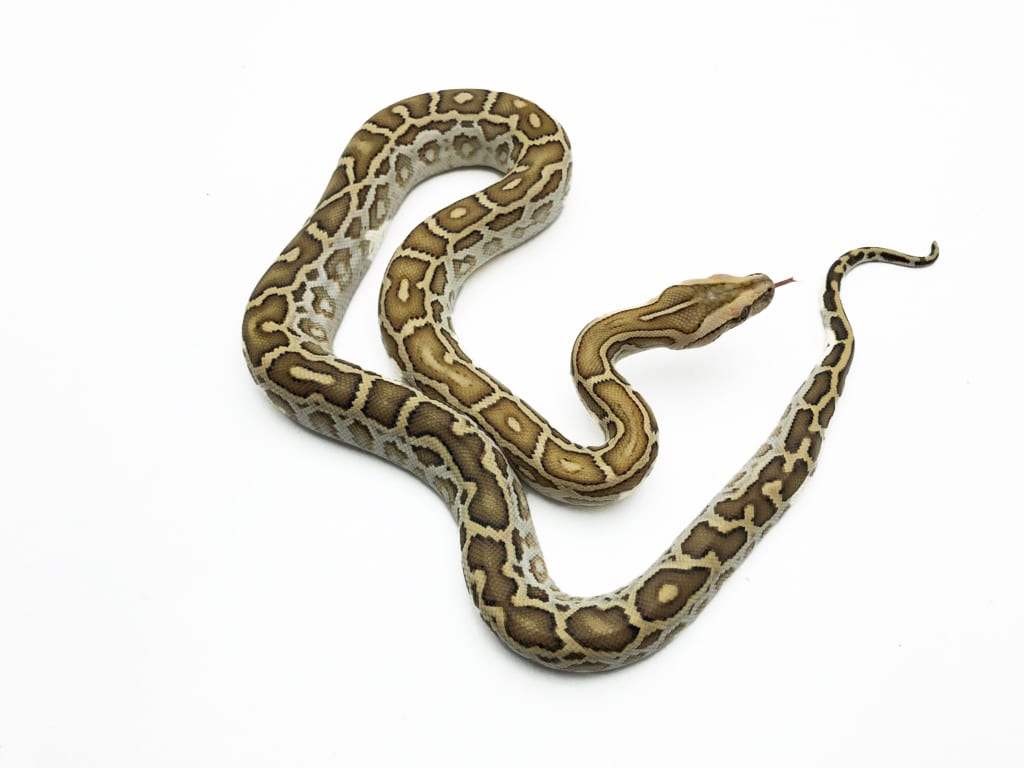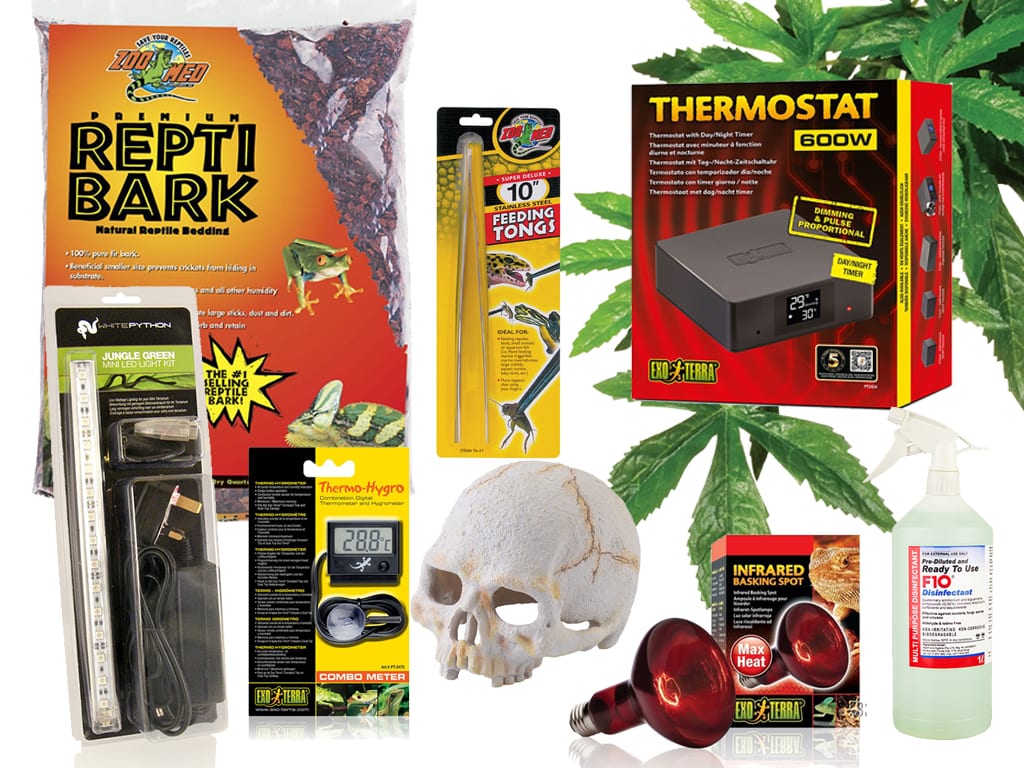
Burmese Python
Care Sheet

The Burmese Python is in the top 5 largest snakes in the world with sizes of up to 26 feet being recorded. This is however quite uncommon and it is possible to keep a Burmese python to a much more sensible size of 12-14ft.
Burmese Pythons make a loud ‘hissing sound’ as part of their defence techniques, this is created by them expelling a lung full of air and it not by making a sound from the mouth.
Burmese Pythons hunt using heat pits in their mouths which allow them to see heat created by mammals, this is why we always advise dipping the defrosted prey item into boiling hot water for 1-2 seconds before offering to your snake. Be sure to shake off any drips onto some kitchen roll first.


HANDLING YOUR BURMESE PYTHON
When handling your burmese python it is important to use an antibacterial hand wash before and after touching your animal. This ensure that no parasites or bacteria is passed between you and your snake. When handling always use a hook to gently stroke the snakes head to let it know you are going to touch it- we call this tap-training. Over time, the snake is able to distinguish between feeding and handling times by not expecting food once it has been stroked gently on the nose. This should be continued throughout the snakes life.
Gently pick the snake up by scooping around 2/3 of the way down the snakes body. Don’t restrict the snake and try not to hold the first 3rd of the snake where the vital organs are, this can cause discomfort to your snake. Always leave 48 hours or more after feeding your snake before handling to prevent bites and discomfort to your animal which can cause regurgitation. We advise not to handle your snake 48 hours before feeding- especially for fussy feeders.


SEXING YOUR BURMESE PYTHON
Male and female snakes may differ between sizes and length of tail, but to get an accurate gender there are 2 methods.
1- probe your snake by sliding the probe under the vent towards the tail. If the probe goes in a small amount then the snake is female, if the snake is male the probe will slide further, this is where the hemipenes are located.
2- ‘pop’ the snake by holding the snakes tail in one hand and gently rolling towards the vent with the other exposing the genitals.
Snakes can be badly damaged during sexing and should only be sexed by a professional.


HEALTH CHECK
It is important to regularly check the health of your burmese python and there are a few common diseases and disorders to look out for.
Eyes– check the eyes are clear of infection, discharge or stuck eye caps (these can occur from a dry shed, increase the humidity or place snake on soak periodically until eye caps come off) you can provide a moss hide for your snake close to shedding time or soak the snake for 20 minutes at a time until the shed comes off.
Skin– check the skin for black spots or raised scales which can be a sign of mites. Mites can usually be seen around the eye socket and under the chin. Mites can be treated using a number of chemical products or for a natural cure, Taurrus predatory mites can be used regularly for prevention and treatment.
Respiratory Infections– RI is a term for a broad spectrum of infections in the lungs and respiratory system. It is generally caused by ill health along with damp or cold conditions and can be treated with a nebuliser. We always recommend seeing the vet if you suspect RI, however it is extremely rare and is not usually the actual cause of the symptoms that are seen. It is normal for Burmese pythons make a loud hissing sound as they move around of if they are startled or feel threatened.








ADVICE FOR LIFE!
When you buy your Pet & Housing from us!
Priority Boarding | Advice available face to face, via Telephone, Facebook Chat, Email, Instagram


